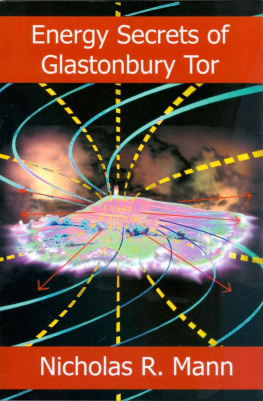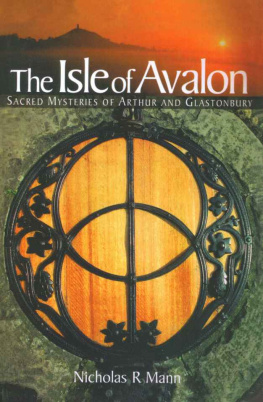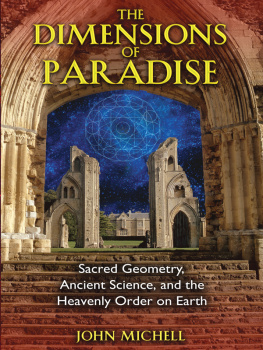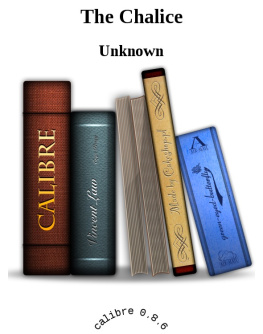First published on Mid-Summer 2007
by
The Temple Publications Ltd.
Somerset
United Kingdom
www.thetemplepublications.co.uk
Info@thetemplepublications.co.uk
Paperback ISBN 978-0-9555970-1-5
Hardback ISBN 978-0-9555970-0-8
This E-Edition published by Temple Publications
September 2012
ISBN 978-0-9572113-6-0
Yuri Leitch 2007
All rights reserved. No part of this publication may be reproduced or transmitted in any form or by any means, electronic, mechanical, including photocopying, recording, or by any information storage or retrieval system, without written permission of the publisher.
Cover design by Lee Yarlett.
All illustrations by Yuri Leitch
Dedication
To the Faeries
(One most always know where ones loyalties lie! )
The future is a fabric of interlacing possibilities, he said. Some of which gradually become probabilities, and a few of which become inevitabilities, but there are surprises sewn into the warp and the woof, which can tear it apart.
( Anne Rice, The Witching Hour )
Acknowledgements:
Alphabetically: Stephen Andrews, PaulBroadhurst, Mary Caine, Andrew Collins, Jennifer Hurford, Andrew Johnson, Laura Johnson, Alex Langstone, Ian Leitch, Nicholas Mann, Lyn Morgan, Bahli Mans-Morris, Oddvar Olsen, Alan Royce, Paul Atlas-Sanders, Sophie Ellyllon, Clive Turner Richard Ward and Paul Weston.
May your hands always be busy May your feet always be swift May you have a strong foundation When the winds of changes shift May your heart always be joyful May your song always be sung and may you stay Forever Young.
( Bob Dylan, Forever Young )
List of illustrations:
A, Front cover and Title page
B, Map of pre-Saxon Somerset
C, Map of Ynys Witrin
1, Pictish Boars p. 4
2, Gwyns Family Tree p. 9
3, Blodeuwedd p. 13
4, Vesica p. 16
5, Yule King p. 25
6, Creurdylad p. 30
7, Midwinter Sun Roll p. 34
8, Glastonbury Zodiac p. 37
9, Gwyns Wheel p. 42
10, Girt Dog p. 43
11, Young warrior p. 50
12, First Century Tor p. 53
13, Maidens p. 58
14, Three Crowns Shield p. 61
15, Dux Bellorum p. 67
16, Lias Mael p. 76
17, SaintNectans Glen p 77
18, Ravens p. 78
19, Hidden Tor p. 86
20, Child p. 88
21, The Tor p. 90
22, Y Draig Goch p. 95
23, Swan p. 100
Contents:
Anyone coming across Glastonbury for the first time cannot fail to be impressed by the towering and enigmatic shape of the Tor. It is such a distinctive feature that even though you may have seen a hundred photographs, the real thing can still take your breath away. Even those who may not like to think of themselves in any way as mystically inclined often admit to strange feelings as they gaze upon it, or climb the steep path to the ruined church of St Michael whose tower dominates the scene.
Why does this place exert such a powerful influence over the human imagination? Why do visitors feel they are setting foot on a special place, some sort of borderland between the mundane and the magical? One of the reasons must surely be that the Tor has been a focus for the mythology, legends and religious impulses of people for many thousands of years. Another, perhaps equally intangible reason is its powerfully energetic nature, which can induce all manner of strange visions and inner experiences.
In this book Yuri Leitch draws us back beyond the more recent legends of the last two millennia to a time when the earth was considered a sacred temple reflecting the patterns of the cosmos, a vast living being responding to the light of the sun, moon and stars, just as we ourselves do. In those times, Glastonbury Tor was the otherworldly abode of Gwyn, a pre-Christian god of Light.
Like a lost dream, we try to recapture the visions that dwell on the edge of our imaginations, attempting to grasp their once vivid meaning with ideas and images that are now half-hidden in our collective memory. This meaning may exist beyond our normal senses, but places like Gwyns abode can focus our higher vision on a view of the world that is of deep significance to many today.
Behind the legends of Glastonbury, and especially the Tor, hides a primeval Lord of Light who has been banished by successive waves of incursions and the ever-changing fashions of religion. Yet the heavenly archangel Michael who now rules over the Tor is but a later incarnation of this same principle, who took over the high places once dedicated to former Druid sun gods. He represents, in the unfolding pattern of human evolution, the highest ideals and spiritual impulses of Mankind. Wellesley Tudor Pole, that great modern visionary who founded Chalice Well Gardens at the foot of the Tor where pilgrims could find peace and inspiration, was convinced that St Michael was destined to become the guiding spirit of a coming new age, when many of these mysteries will reveal themselves. It is perhaps not then surprising that Glastonbury Tor has become a worldwide symbol for this awakening consciousness. It is a truly timeless place where we can recognise that whatever names we may give them, ultimately these spiritual presences represent cosmic principles, the ineffable intelligence of nature, and our relationship with them.
Paul Broadhurst
Cornwall, England
21st April 2007
www.mythospress.co.uk
Introduction
The account of Gwyns Tor abode is in a sixteenth-century Welsh text. It shows no influence from Glastonburys literary legends and undoubtedly preserves much older tradition.
(Geoffrey Ashe, Mythology of the British Isles )
I moved to Glastonbury at the very beginning of 2001, drawn here by odd circumstances and a love of the myths and legends of this place. For thirteen years or more I had been visiting the entrancing Tor, drawn like a moth to a flame. When I finally found myself living here I walked up the Tor and made a quiet oath to myself to learn all I could about this place. Now, six years later, I am still learning and every day feels like I am still at the beginning of that journey. This book is a collection of the discoveries that I have so far been lucky enough to find. A collection of Otherworldly treasures surrounding a specific theme, a theme that can be embodied as part of Gwyns story.
Over the centuries Glastonbury has attracted many legends to its sacred soil. Most famously those of King Arthur and the Holy Grail, but these are not the oldest insights into this misty island. At their very best, if these legends were true then they would still only take us back to the 1 st century. This island was a sacred sanctuary for thousands of years before then. So, how do we unearth the oldest spirit of this sanctuary? Thats what has interested me. To get beyond the shimmering heraldry of Arthur and pass by the shining glamour of the Grail, to go further back to the source: to the root and the beginning of things.
There are many mists in Avalon and the further you go back in time the thicker and denser those shifting mists become but it is a path that has to be explored none-the-less, and as with all journeys into the Otherworld realms there are treasures to be found.












